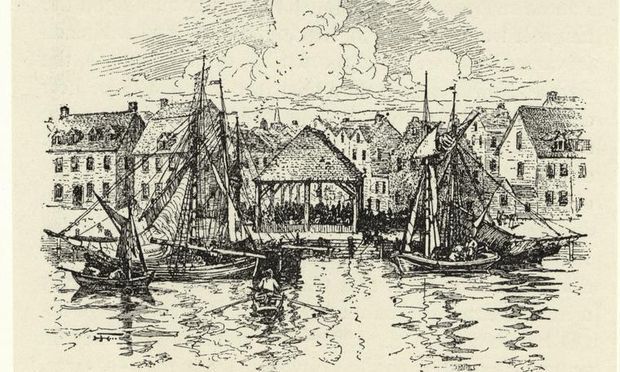A Salvaged Banksy Mural is Now on View in NYC
This unique Banksy mural goes up for auction on May 21st in NYC!


Before stocks were traded on Wall Street, and not long after Wall Street was an actual wall to keep out British and Native American marauders, there was a slave market at the intersection of Pearl Street. As reported yesterday by WNYC, New York City government will acknowledge for the first time in history that the slave market existed, and add a historical marker to join the other 38 important sites downtown. The slave market was active between the years of 1711 and 1762 at the corner of Wall Street and Pearl Street.

NYC’s Slave Market. Image via Digital Gallery/New York Public Library)
The marker will be placed in a pocket park on the northeast corner of Wall and Water Streets, but keep in mind that the slave market would have been located on the waterfront during its time of operation, with infill later extending New York City’s shoreline. Like the architecture of many other slave markets in this country and around the world, it was made of wood with open sides, “although walls may have been added over the years. Renderings show that it could hold perhaps 50 men,” writes WNYC.
Says City Councilman Jumaane Williams, “The slaves of that time and place helped build City Hall. Their lives should be celebrated and their deaths should be mourned.” Williams supported legislation to create the historical marker, which will cost $5,000 and contends that “In the $70 billion city budget, that’s like losing a quarter…and the significance of it is priceless.”
The official acknowledgment serves as a reminder that slavery was a practice in both the northern and southern United States, and slaves supported not only the agricultural industry in the United States but also the financial industry, with companies like Aetna, New York Life and JPMorgan Chase backing the plantations down south and insuring slaves. New York City itself received tax revenue from every slave sold and used slave labour for infrastructure work. Hiring of slave labor was so entrenched in the urban fabric of New York City that slaves would be sent into the streets to hire themselves out for short term labor, and the slave market was created because certain New Yorkers were worried that the mingling of slaves and residents might lead to a rebellion, a fear that came to reality in 1712 and again in 1741.
Next, read about the Gilded Age Southern tycoon and the his lost mansion on Hunts Point in the Bronx. Read on at WNYC for more about the practice of slavery in New York City.
Subscribe to our newsletter